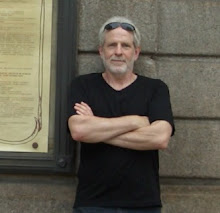[This piece has nothing to do with the purported theme of the blog, but it's summer and Massachusetts is awash in colonial tourism. JB]
We Americans love our mythic history more than our actual history. This is understandable since real history is ambiguous and unpleasant while national myths are reassuring and optimistic. They are feel-good fantasies promulgated to boost civic pride and, like all myths ancient and modern, give insight into the national character without necessarily being true.. I have nothing against these myths provided that they are not passed off as actual history and more importantly, are not incarnated in "historical" recreation villages.
Perhaps it's insecurity about our country's short lifespan that makes us yearn for some theatrical embodiment of an idealized past. Neapolitans have yet to set up Ye Olde Volcano Village amid the Vesuvian ruins to reenact the natural disasters of first-century Rome. They take pride in the actual Pompeii and Herculaneum and constantly debate the trade-offs of restoration, conservation, and tourism. They prefer displaying the rock-encased bodies of the original inhabitants to having toga-clad actors run from imaginary showers of ash. Americans, in contrast, will travel hundreds of miles to watch a bonneted high school girl churn butter just off Exit 9 of the Mass. Turnpike.
Old Sturbridge Village and Plimoth Plantation are two very big attractions on the East Coast colonial circuit. To be fair, these sites do have historical roots, and Sturbridge Village does have many buildings and artifacts that date back to the time frame they try to reanimate. The activities, crafts, and costumes are said to be accurate, and I don't question their scholarship. It's what isn't shown that bothers me.
Where, for example, are the recreations of 17th century surgery? As a grade school student, I went on several field trips to these places, and I don't recall a single exhibit where a leg was amputated without anesthesia and cauterized with a hot iron. I don't remember hearing the blood-curdling screams that must have been common while undergoing the dentistry of yore. The staff may dress appropriately, but I bet they bathe more often than their colonial counterparts did. The smell of Mennen Speed Stick gives lie to the reality of Puritan-era hygiene.
If the goal is to give the visitor a real feel for colonial life, forget about candle-making and weaving classes. Hook them up to an ox-drawn plow and let them break up rocky fields for twelve hours.
By ignoring the more distasteful elements, these sites minimize the actual hardships undergone by our American ancestors - well, perhaps your American ancestors as mine didn't arrive from Latvia until 1904. That they survived and prospered is a testament to their strength and resolve, and it is a disservice to their difficult and dangerous lives to pretend they can be encapsulated in theatrical displays, 9 AM to 5 PM, March through November. What about winter? My understanding is that winters were particularly hard on these folks. Perhaps a group of actors wearing insufficient period garb could demonstrate starving and freezing to death using a walk-in refrigerator.
I don't want to be overly disingenuous about these places - they are first and foremost tourist sites with their own hardships, primarily economic. I know that they have to provide all the modern amenities to attract visitors and must balance authenticity with user-friendliness. This might explain the "Plimoth Cinema," an indie art house on the Plimoth Plantation site. Because when I think of colonial America, the first thing that pops into my mind is Jean-Luc Godard.
